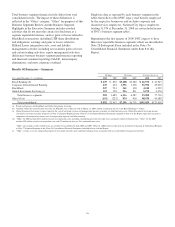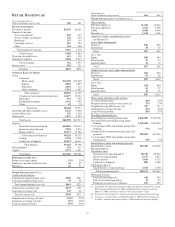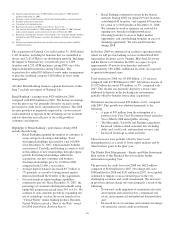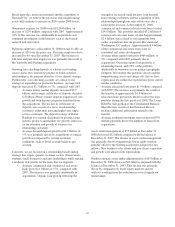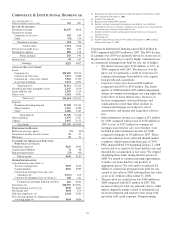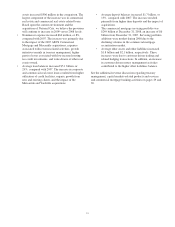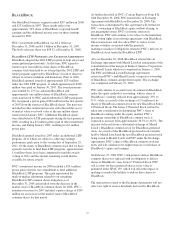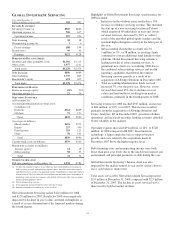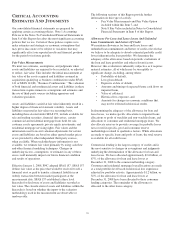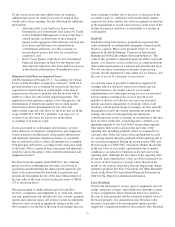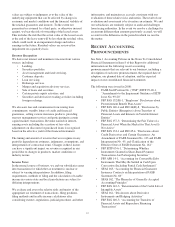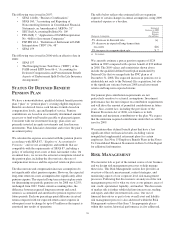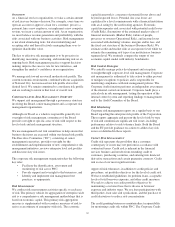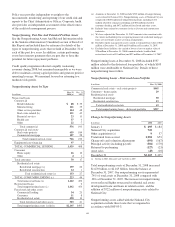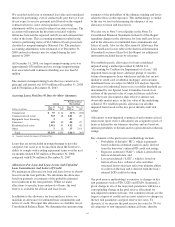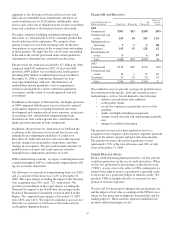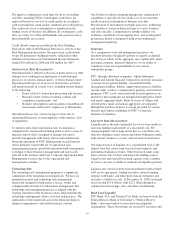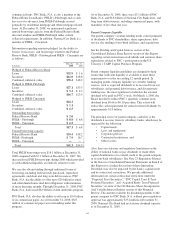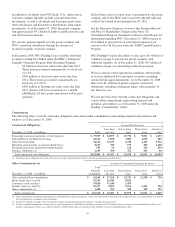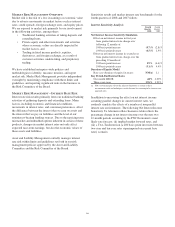PNC Bank 2008 Annual Report Download - page 60
Download and view the complete annual report
Please find page 60 of the 2008 PNC Bank annual report below. You can navigate through the pages in the report by either clicking on the pages listed below, or by using the keyword search tool below to find specific information within the annual report.To the extent actual outcomes differ from our estimates,
additional provision for credit losses may be required that
would reduce future earnings. See the following for additional
information:
• Allowances For Loan And Lease Losses And
Unfunded Loan Commitments And Letters Of Credit
in the Credit Risk Management section of this Item 7
(which includes an illustration of the estimated
impact on the aggregate of the allowance for loan and
lease losses and allowance for unfunded loan
commitments and letters of credit assuming we
increased pool reserve loss rates for certain loan
categories), and
• Note 5 Asset Quality in the Notes To Consolidated
Financial Statements in Item 8 of this Report, and
Allocation Of Allowance For Loan And Lease Losses
in the Statistical Information (Unaudited) section.
Estimated Cash Flows on Impaired Loans
AICPA Statement of Position 03-3, “Accounting for Certain
Loans or Debt Securities Acquired in a Transfer” (SOP 03-3)
provides guidance for accounting for certain loans that have
experienced a deterioration of credit quality at the time of
acquisition for which it is probable that the investor will be
unable to collect all contractually required payments. The
application of this guidance requires a two-step process: the
determination of which loans qualify due to credit quality
deterioration and the determination of fair value and
undiscounted expected cash flows for the loans that are in the
scope of SOP 03-3. SOP 03-3 prohibits “carrying over” or
creation of an allowance for loan losses in the initial
accounting of all loans in scope.
In our assessment of credit quality deterioration, we must
make numerous assumptions, interpretations and judgments,
based on internal and third-party credit quality information
and ultimately determine whether we believe it is probable
that we will not be able to collect all amounts due, including
both principal and interest, according to the contractual terms
of the loans. This is a point in time assessment and inherently
subjective due to the nature of the available information and
judgment involved.
For those loans that qualify under SOP 03-3, the valuation
process involves estimating the fair value of each loan at
acquisition and determining the undiscounted expected cash
flows to be realized from the loan both at acquisition and
periodically throughout the life of the loan. Measurement of
the fair value of the loan is based on the provisions of SFAS
157 as discussed above.
The measurement of undiscounted expected cash flows
involves assumptions and judgments as to credit risk, interest
rate risk, prepayment risk, default rates, loss severity, payment
speeds and collateral values. All of these factors are inherently
subjective and can result in significant changes in the cash
flow estimates over the life of the loan. Such changes increase
future earnings volatility due to increases or decreases in the
accretable yield (i.e., difference between the undiscounted
expected cash flows and the fair value) recognized on the loan
or the requirement to record a provision for credit losses if the
decline in expected cash flows is attributable to a decline in
credit quality.
Goodwill
Goodwill arising from business acquisitions represents the
value attributable to unidentifiable intangible elements in the
business acquired. Most of our goodwill relates to value
inherent in the Retail Banking, Corporate & Institutional
Banking and Global Investment Servicing businesses. The
value of this goodwill is dependent upon our ability to provide
quality, cost effective services in the face of competition from
other market participants on a national and international basis.
We also rely upon continuing investments in processing
systems, the development of value-added service features, and
the ease of access by customers to our services.
As such, the value of goodwill is ultimately supported by
earnings, which is driven by transaction volume and, for
certain businesses, the market value of assets under
administration or for which processing services are provided.
Lower earnings resulting from a lack of growth or our
inability to deliver cost-effective services over sustained
periods can lead to impairment of goodwill, which could
result in a current period charge to earnings. At least annually,
management reviews the current operating environment and
strategic direction of each reporting unit taking into
consideration any events or changes in circumstances that may
have an effect on the unit. A reporting unit is defined as an
operating segment or one level below an operating segment.
This input is then used to calculate the fair value of the
reporting unit, including goodwill, which is compared to its
carrying value. If the fair value of the reporting unit exceeds
its carrying amount, then the goodwill of that reporting unit is
not considered impaired. During the fourth quarter 2008, and
the first quarter of 2009, PNC considered whether the decline
in the fair value of our market capitalization due to market
conditions is an indicator of declines in the fair value of the
reporting units. Although the fair values of the reporting units
decreased, their estimated fair values are still considered to be
in excess of their respective carrying values. Based on the
results of our analysis, there have been no impairment charges
related to goodwill. See Note 9 Goodwill and Other Intangible
Assets in the Notes To Consolidated Financial Statements in
Item 8 of this Report for additional information.
Lease Residuals
We provide financing for various types of equipment, aircraft,
energy and power systems, and rolling stock through a variety
of lease arrangements. Direct financing leases are carried at
the sum of lease payments and the estimated residual value of
the leased property, less unearned income. Residual value
insurance or guarantees by governmental entities provide
support for a significant portion of the residual value. Residual
56


